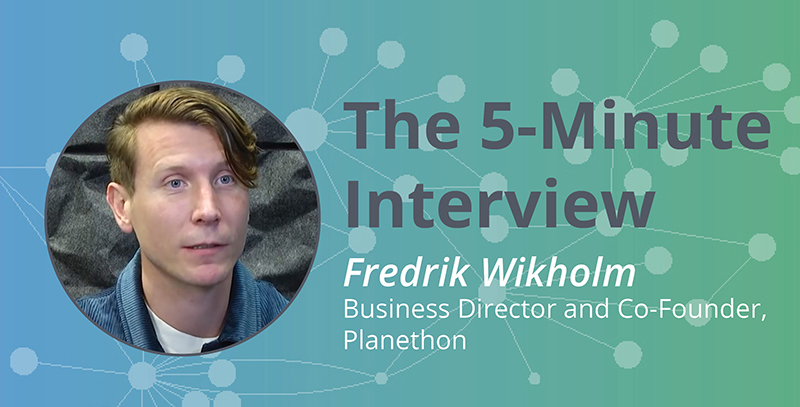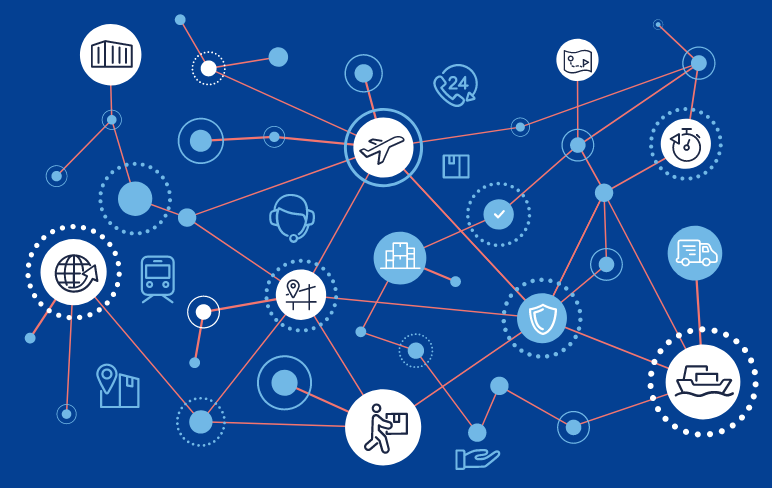Graph data science is the approach Planethon is taking to do planet R&D on massive datasets with enormous amounts of knowledge about the earth and all its complexities.
In this week’s five-minute interview (conducted at GraphTour Stockholm 2019), we speak with Fredrik Wikholm, Business Director and Co-Founder of Planethon.
What is Planethon?
Planethon’s mission is planet R&D, providing a bridge between Earth science at large and business. We connect what we know about our planet with how we do business in this world, because it’s quite clear to us that how we do business needs to be deeply and profoundly influenced by how our Earth system works. We help companies build their business on how Earth works and what we know about it today.
Who does Planethon work with?
There are two groups. Our clients are companies where we’ll be building something, and therefore business developers who are C-suite management. Often it starts with the CEO who has defined that they want to make a transformation of how they build their business from being not so very sustainable, to being sustainable or, in our terms, planet-positive. That’s one side of it and how we build things.
The other side is really investors at large. We connect them with science that informs them about how to invest in what is sustainable now and in the future. And often I think both of those groups find themselves in the same conundrum, which is filled with good intention and knowing that they need to do things differently.
We need to listen to a bigger Earth system of how we extract resources, how we build things, how we look at whatever is the byproduct, and so on and so forth. But there’s still a lot of guessing. There’s multiple ways of assessing what’s sustainable in terms of investment. For the most part, there are sustainability challenges in almost every company. There’s really no united front, and very little of it is based on knowing our planet and what we actually know so far.
So in the case of Planethon, we try to make it substantially easier to understand. For example, what are the things we actually need to address? What are the technologies out there that you can utilize to address them? How do you build innovation processes to make it happen?
How do graphs help you solve these problems?
Fundamentally we are a planet R&D company, so research is extremely important. It’s heavily anchored in massive datasets with enormous amounts of knowledge about our planet and all its complexities. For example, how does an ecosystem work, locally or on a broader scale? How does the atmosphere work? Where do we currently stand in terms of global warming?
All of that data is data on a massive relationship. It’s like the Earth system and all the social systems on top of it are social graphs, knowledge graphs, and enhancing graphs or you might even call them regenerative graphs.
For us to use something like Neo4j is fundamentally very important because it’s at least trying to apply a real system to how the real system looks, in stark contrast to almost all other storage of data up until now. It simply makes it easy for us to see relationships that are relevant, extract and synthesize key insights, and see things no one’s seen before.
What’s next for Planethon?
At Planethon, we’re in an exciting stage of both having to perform for real with a lot of clients and partners like big industrial players in the world that are committed to building new versions of themselves that are sustainable and are in alignment with how Earth’s system functions. Right now, we’re in a stage of R&D with many of these companies as partners. That’s one big part of it.
The other part of it is really just amping up the capacity of our technology. So right now, we’re in a stage of getting ready for funding on a reasonable staff size, but now we need to amp up developer teams and just build, and build, and build.
What was working with Innovation Lab like?
We’ve done two innovation sprints, or lab weeks, with Neo4j, one very early and one once we’d dug in a little bit deeper. For the first innovation sprint, we had some graph understanding so it was really just learning how do you apply graph to siloed Earth science and trying to understand how it works and our capabilities and whether it was going to be tricky. And that was really good. I think it clarified without a doubt that we’re a graph company first. That was the actual outcome of that sprint.
For our second sprint, we had datasets, we had a direction, so what we could do now was go a lot more toward the data science and simply work with graph algorithms on a more complex level. We could really focus on something that I think partially is quite new to the graph world as well and we could be guinea pigs for it. That really helped us hammer out our process for how we build technology and what we want to achieve. And it actually validated our idea, which went from idea to reality. We can actually use graph algorithms to get the answers that we’re hoping to get to questions like what should the companies of the world invest in and support to lead the way to a sustainable future.
Do you have any advice for people starting out with graphs?
When approaching graph, or stepping into a lab, I find I am eager to jump to conclusions. I come less from a technological background and more from a research and business development background. It’s easy to jump to conclusions and get frustrated with the process. I’d say hold on and trust the process.
Another bit of advice is to get in there with real use cases. It’s so much more valuable with real data and a real hypothesis. Even if you just come out having crushed your hypothesis, it’s better than guessing.
Want to share about your Neo4j project in a future 5-Minute Interview? Drop us a line at content@neo4j.com




